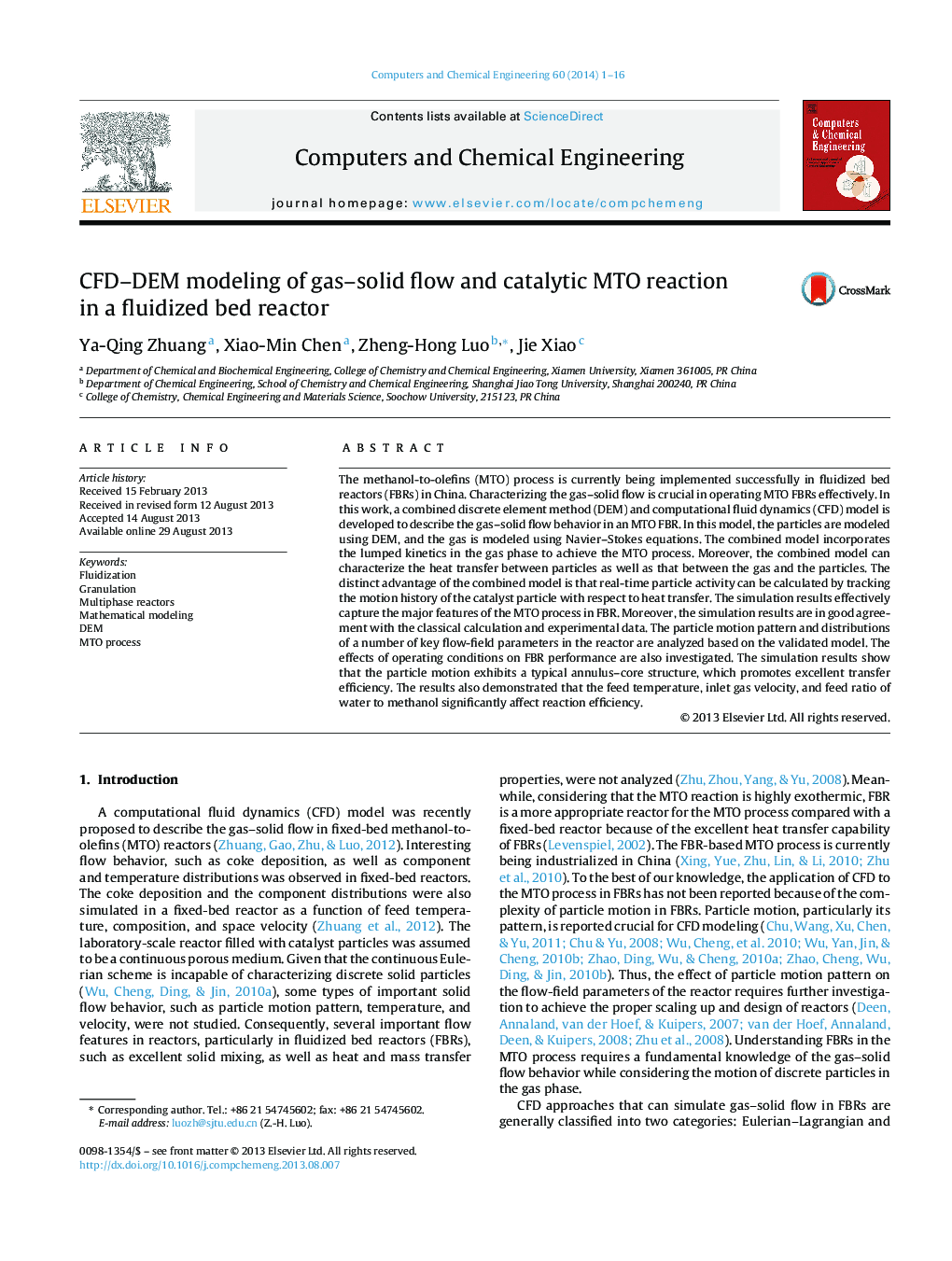| کد مقاله | کد نشریه | سال انتشار | مقاله انگلیسی | نسخه تمام متن |
|---|---|---|---|---|
| 172421 | 458542 | 2014 | 16 صفحه PDF | دانلود رایگان |

• The DEM–CFD model is developed to describe flow and reaction in a MTO FBR.
• Particles are modeled by the DEM and gas by the Navier–Stokes equations.
• The combined model incorporates a lumped kinetics for the MTO process.
• The combined model also incorporates some key heat transfer equations.
• The simulation results capture the major features of MTO process well in FBR.
The methanol-to-olefins (MTO) process is currently being implemented successfully in fluidized bed reactors (FBRs) in China. Characterizing the gas–solid flow is crucial in operating MTO FBRs effectively. In this work, a combined discrete element method (DEM) and computational fluid dynamics (CFD) model is developed to describe the gas–solid flow behavior in an MTO FBR. In this model, the particles are modeled using DEM, and the gas is modeled using Navier–Stokes equations. The combined model incorporates the lumped kinetics in the gas phase to achieve the MTO process. Moreover, the combined model can characterize the heat transfer between particles as well as that between the gas and the particles. The distinct advantage of the combined model is that real-time particle activity can be calculated by tracking the motion history of the catalyst particle with respect to heat transfer. The simulation results effectively capture the major features of the MTO process in FBR. Moreover, the simulation results are in good agreement with the classical calculation and experimental data. The particle motion pattern and distributions of a number of key flow-field parameters in the reactor are analyzed based on the validated model. The effects of operating conditions on FBR performance are also investigated. The simulation results show that the particle motion exhibits a typical annulus–core structure, which promotes excellent transfer efficiency. The results also demonstrated that the feed temperature, inlet gas velocity, and feed ratio of water to methanol significantly affect reaction efficiency.
Figure optionsDownload as PowerPoint slide
Journal: Computers & Chemical Engineering - Volume 60, 10 January 2014, Pages 1–16